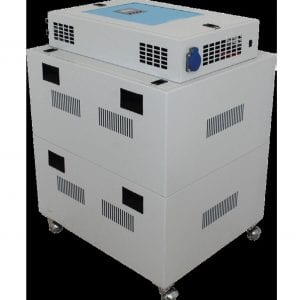
Agriculture
November 7, 2018
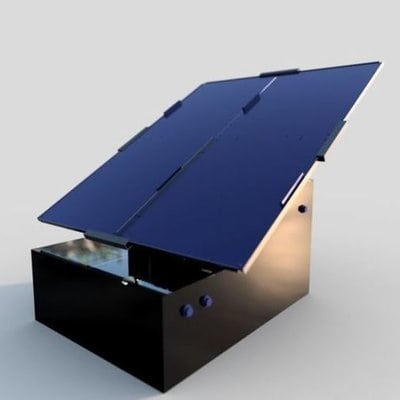
Updated on January 5, 2024
·Created on July 7, 2016
SunZilla is a portable and modular, pop-up solar-powered generator.
The SunZilla 3.0 Solar Generator prototype is an open-source, portable, modular and plug and play technology intended for off-grid solar energy production. The Sunzilla team is located in Berlin, Germany. The company, however, was discontinued in 2017.
Target SDGs
SDG 7: Affordable and Clean Energy
Market Suggested Retail Price
$2,900.00
Target Users (Target Impact Group)
Household, Small and Medium-sized Enterprises
Distributors / Implementing Organizations
SunZilla is the sole distributor of the solar generator.
Competitive Landscape
Direct competitors include IEEE Smart Village SunBlazer IV.
Regions
Europe
Manufacturing/Building Method
SunZilla manufactures each system individually in their workshop in Berlin with plans to establish a production facility. Interview with representative in 2016
Intellectural Property Type
Open-source
User Provision Model
The organization closed down in 2017
Distributions to Date Status
Three SunZilla 3.0 prototypes have been sold along with an undisclosed number of the previous SunZilla versions. Interview with representative in July 2016
Power rating (W or kW)
0.4 kW
System dimensions (m)
Unknown
Battery type
Battery
Battery capacity (mAh)
0.6 with 0.6 kW output power
Description of solar panels
Unknown
Grid compatibility (yes/no)
No
Description of mobility
Yes
Design Specifications
The surface area of the entire SunZilla platform equals the dimensions of a standard euro-palette (height of 110 cm), providing an unfolded solar module surface area of 8.5 square meters." SunZilla's webpage in 2016
SunZilla is designed for a household up to 7 persons: It is possible to run a fridge, charge mobile phones & laptops, and use electric light. SunZilla is modular, so you can interconnect SunZilla Solar Generators to enlarge the power of the system and form a micro-grid
Technical Support
For technical support, refer to the online instruction guides or contact SunZilla directly: contact@sunzilla.de
Replacement Components
The batteries, control systems, cables and terminals will need to be replaced over time as the system wears.
Lifecycle
The solar panels have a 20 year manufacturer warranty and the battery has an 8 year manufacturer warranty. The lifecycle of the product is 20 years.
Manufacturer Specified Performance Parameters
Unknown
Vetted Performance Status
None
Safety
Be sure to follow proper electrical installation and control guidelines.
Complementary Technical Systems
- DC to AC Inverters
- Electromagnetic Compatibility (EMC) Filters
- Water purification
- Cooling and heating systems
- Telecommunication systems
Academic Research and References
Clark. A., Pavlovski. C. J., 2010, “Wireless networks for the smart energy grid: application aware networks,” IMECS, 2, pp. 1-6.
A. Clark, C.J. Pavlovski, and J. Fry, 2009, “Transformation of Energy Systems: The Control Room of the Future,” IEEE Electrical Power and Energy Conference
Compliance with regulations
SunZilla is working toward Conformité Européene (CE) certification and the development of a recycling program.
Evaluation methods
Unknown
Other Information
Sunzilla's open-source, portable, do-it-yourself solar generator
Sunzilla unfolds a clean, portable, open source solar array
Video: SunZilla: A DIY Solar-Powered Generator To Go
SunZilla participated in the POC 21 innovation camp to further develop the solar generator with software design support from Autodesk Foundation. Previous work of the idea began with Bootschaft, a Berlin based non-profit.

Agriculture
November 7, 2018

Agriculture
December 2, 2024
Implemented by
Asian Phoenix Resources Ltd.
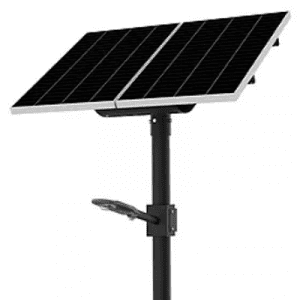
Agriculture
January 19, 2024
Implemented by
Solar Street Lights Africa
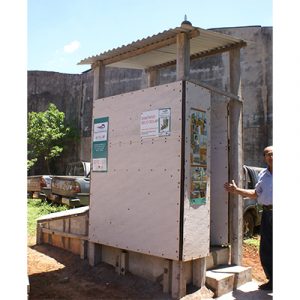
Agriculture
January 17, 2024
Implemented by
Centro de Desarrollo del Habitat y el Medio Ambiente (CEDES/Habitat)
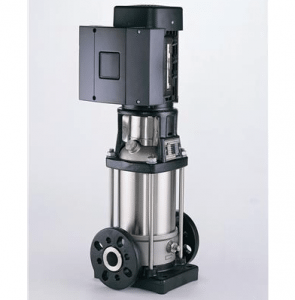
Agriculture
January 31, 2024
Implemented by
Grundfos
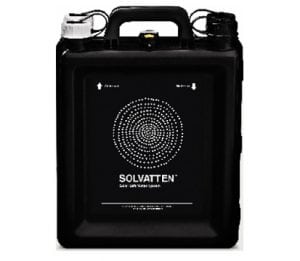
Agriculture
January 16, 2024
Implemented by
Solvatten
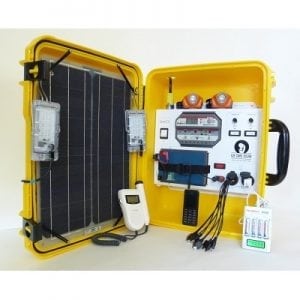
Agriculture
January 5, 2024
Implemented by
We Care Solar
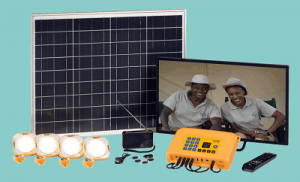
Agriculture
January 3, 2024
Implemented by
Azuri Technologies

Agriculture
January 20, 2024
Implemented by
Kavita Solar
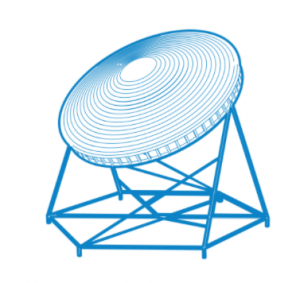
Agriculture
December 19, 2024
Implemented by
CLIMATENZA
Have thoughts on how we can improve?
Give Us Feedback
The Sunzilla 3.1 Generator has different performance profile than listed here.
Additional information on the product would also be helpful for general evaluation.
1. The rated PV output is 140Wp. The model design has 4x35W flexible panels branded with: SUPERFLEX SGM-FL-35W
2. The category “number of batteries charged per day” is not detailed enough and is not very useful. Instead this should provide sub-categories, potentially adjustable when this is information is inputted. For the Sunzilla 3.1 Generator, the manufacture stated charging performance is:
> 10 – 25 Smartphones continuous charging (depending on weather)
> 60L refrigerator,
> 2 or 3 laptops,
> Water pump with purification unit (80 to 200/day)
The manufacture estimations on loads serving capability should indicate the ratings of the load and daily duty cycle in order to be verified. In the case of Sunzilla 3.1, there is no data available.
3. “Power Rating” is confusing. Instead this should broken down into
a. Generation technology and capacity – for Sunzilla this would be ” 4x35W flexible mono-crystalline solar PV. Max rating 140Wp”
b. Power Supply: 350W continuous load, 700W (peak / surge) Load
4. “Storage Type” requires more information. It should state: “2x Yuasa NP38-12B Absorbent Glass Mat (AGM) Technology: each @ 12V 40Ah”
5. It would be helpful to state the nominal DC voltage if applicable. In the case of the Sunzilla, this should state: “24V DC”
6. The converters should be specified. In the case of the Sunzilla this should state: ” Charge Controller: MPPT-Battery charger, here we used a Victron- Blue-Solar-Charge-Controller-MPPT-100-15, Inverter: Victron Phoenix-Inverter-350, 350 VA, 24 V”
7. There should be a box for warranty information if any is offered. For Sunzilla, there appears to be no warranty for the integrated system.
8. If there are local distributors, a list of contacts should be provided with the associated country and city.
9. “Grid Compatible” is unclear. Is this whether you could turn use this as a micro-grid/mini-grid or not, or if it is feasible to connect this directly to a centralized grid (i.e. it has a grid-tie inverter of some sort and a controller to manage balance)?
System charging requirements or guidelines would be helpful. This would help users determine how suited it is for particular areas.
From a low-voltage disconnect state (usually this is 50% depth of discharge for lead-acid battery technologies) to full charge:
1. How long should it take to recharge in hours?
2. For PV technologies What is the Peak Sun Hours needed to achieve this full recharge?
3. Days of autonomy should be specified for a typical (or designed) load profile or a set of profiles.
The Sunzilla Generator’s information needs to be updated:
Under Performance:
1. “Power Rating” section is a confusing title and should be changed to “Generation Technology and Capacity”. The technology and sub-components with model numbers are useful. Sunzilla should be: “0.14 kW total consisting of 4x35W Semi-flexiblemono-crystallinePV-modules SUPERFLEXSGM-FL-35W” For SunBlazer II this should state “1.8 kW total consisting of 6x 300W Polycrystaline modules” E-HUBB should state “Basic solution has a 1 to 4 kWp total capacity, but this can be expanded to larger solutions.”
2. “Load Serving Capabilities” should be added. For Sunzilla it should state “350W continuous load, 700W peak/surge load”. For SunBlazer it should state “1500W continuous”
3. “Battery Capacity” should be renamed to “Battery Capacity & Energy Storage” should likewise include the key components and model numbers. For Sunzilla it should state ” 2x Yuasa NP38-12B 38Ah 12V Absorbent Glass Mat (AGM) Lead Acid Batteries. Total Energy Storage = .912 kWh”. SunBlazer reads fine as is. For E-HUBB should state “undisclosed”
4. “Maximum Batteries Charged Per Solar Day” is very confusing and should be removed. It should be replaced with “Designed Load Profiles” which can be set flexibly depending on the technology. Some systems won’t charge batteries and will only serve load, while other will only have battery charging and no directly connected loads. Details on the loads included and duty cycle, on a daily basis should be provided and several combinations of the loads could be provided, thus the assumptions would be clearly seen. Sunzilla states that it has designed systems with mobile phone charging (between 10 – 25 per day), laptops (2 or 3), small refrigerators (60L), and a water pumping solution. However, no details on the loads or specific combinations are provided. A good model for this section would be as follows (note the values are not real and not relevant to Sunzilla – only for making the example):
1. Load Profile: Phone charging station
a. 40x smart phones charged per day, 4 cycles per day, 10 phones per charge cycle of 2 hours @10W each = 100W peak power, 800Wh load per day
b. 1x laptop, 4 hours of use per day @50W = 50W peak power, 200Wh per day
2. Load Profile: Water pumping and filtration system
a. 5x smart phones charged per day, 5 cycles per day, 1 phones per charge cycle of 2 hours @10W each = 10W peak power, 100Wh load per day
b. 1x laptop, 4 hours of use per day @50W = 50W peak power, 200Wh per day
c. 1x water pump, 4 hours of use per day @200W = 200W peak power, 800Wh per day
3. There should be another section entitled “Converter technology”. for sunzilla this should state: “Inverter Victron phoenix 24/350 Charge Controller Victron blue solar 100/15” For SunBlazer this should state “Unspecified MPPT Controller managing station battery charging. 10 to 20 charging channels for Universal Portable Battery Kits – up to 20. Controller can optionally be supplied by an external AC source (1000W) or be directly connected to an AC load (up to 1500W 230 VAC 50/60Hz)”
4. The nominal DC voltage should be state, where applicable. In the case of Sunzilla, this should be “24V DC Nominal”. For SunBlazer it should state “24V or 48V DC”
5. “Grid Compatible” is unclear. This could mean either that the technology could be used to make a mini-/micro- grid, OR, that it can feasibly be connected to a main grid, and contained the relevant control equipment to do so (i.e. grid-tie inverter). If the latter usage is intended, the converter details should be included.
6. “Warranty Information” Should be added. It appears that Sunzilla has no warranty for the integrated product, though surely the Victron converters have warranties. SunBlazer appears to have no warranty for the integrated product.
7. “Performance data and communications” should be added. This should if any on-board system monitoring and data acquisition takes place (and details of this) for example if voltage and amperage is monitored and stored. Secondly, if there is a communications module to transmit data and visualization module to view data either locally or remotely. Sunzilla and SunBlazer currently do not provide any information on this feature. The E-HUBB has “On board technical system monitoring integrated with a financial customer management. Local Visualization.”
8. For Related Academic literature, SunBlazer should be ranked as a 2 of 5 as there are a number of articles in academic journals and conferences which reference the solution and business model. I can provide some links to these if needed. The other solutions did not have any academic literature that was available after a short review.